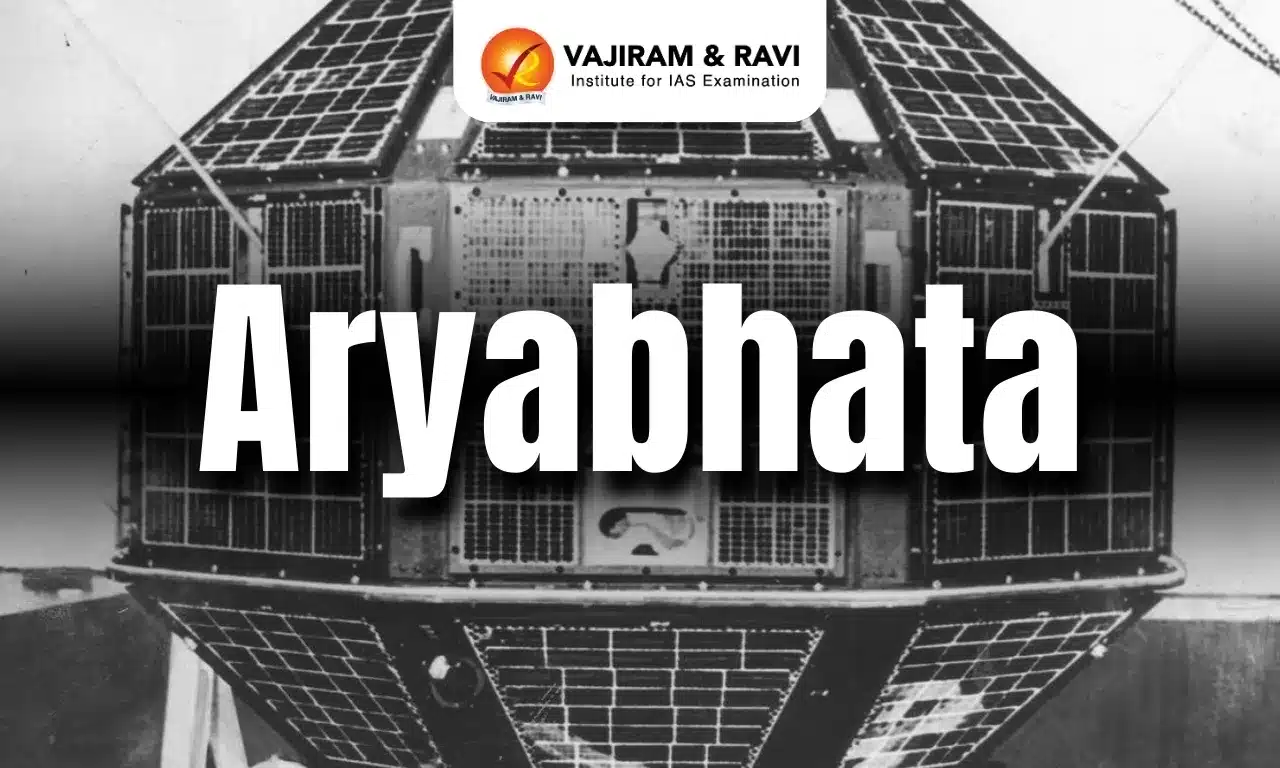Aryabhata Latest News
50 Years Since the Launch of Aryabhata – India’s First Satellite
About Aryabhata
- Aryabhata was India’s first indigenously-built satellite, named after the ancient Indian mathematician and astronomer Aryabhata, who lived in the 5th century CE.
- It was launched on April 19, 1975, from Kapustin Yar, a Soviet launch site, with the help of the Soviet Union.
- By launching Aryabhata, India joined an elite club of 11 countries capable of sending satellites into orbit, including the USA, USSR, UK, France, China, West Germany, Australia, Canada, Japan, and Italy.
- Aryabhata was designed to conduct experiments in solar physics and X-ray astronomy.
- Although the experiments faced a power failure after five days, Aryabhata successfully made initial X-ray observations and continued transmitting data for a few more days.
- Aryabhata eventually re-entered Earth’s atmosphere on February 10, 1992, giving it an orbital lifespan of nearly 17 years.
- The satellite was unnamed until shortly before the launch. Prime Minister Indira Gandhi selected ‘Aryabhata’ from a shortlist that included ‘Mitra’ and ‘Jawahar’, reflecting cultural and diplomatic values.
- India’s Posts and Telegraphs Department issued a special commemorative postal stamp within hours of the launch.
- The Soviet Union issued its own Aryabhata commemorative stamp in 1976, recognising the spirit of scientific cooperation.
Source: TH
Last updated on November, 2025
→ Check out the latest UPSC Syllabus 2026 here.
→ Join Vajiram & Ravi’s Interview Guidance Programme for expert help to crack your final UPSC stage.
→ UPSC Mains Result 2025 is now out.
→ UPSC Notification 2026 is scheduled to be released on January 14, 2026.
→ UPSC Calendar 2026 is released on 15th May, 2025.
→ The UPSC Vacancy 2025 were released 1129, out of which 979 were for UPSC CSE and remaining 150 are for UPSC IFoS.
→ UPSC Prelims 2026 will be conducted on 24th May, 2026 & UPSC Mains 2026 will be conducted on 21st August 2026.
→ The UPSC Selection Process is of 3 stages-Prelims, Mains and Interview.
→ UPSC Result 2024 is released with latest UPSC Marksheet 2024. Check Now!
→ UPSC Prelims Result 2025 is out now for the CSE held on 25 May 2025.
→ UPSC Toppers List 2024 is released now. Shakti Dubey is UPSC AIR 1 2024 Topper.
→ UPSC Prelims Question Paper 2025 and Unofficial Prelims Answer Key 2025 are available now.
→ UPSC Mains Question Paper 2025 is out for Essay, GS 1, 2, 3 & GS 4.
→ UPSC Mains Indian Language Question Paper 2025 is now out.
→ UPSC Mains Optional Question Paper 2025 is now out.
→ Also check Best IAS Coaching in Delhi
Aryabhata FAQs
Q1. Who was Aryabhata?+
Q2. When was Aryabhata’s satellite launched by India?+
Q3. What is Aryabhata’s contribution to mathematics?+
Tags: aryabhata prelims pointers upsc prelims current affairs

















